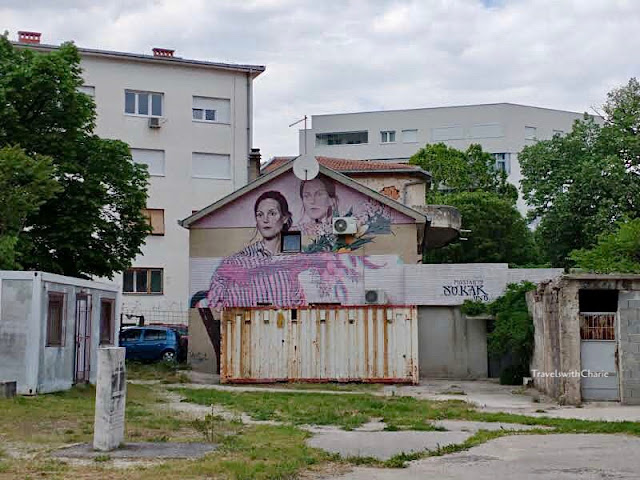Stari Most or Mostar Old Bridge
The original arched bridge was commissioned in 1557 by Suleiman the Magnificent of the Ottoman Empire and completed in 1566. It stood for 427 years until 1993 when it was demolished during the Croat-Bosnian War. It was reconstructed between 2001-2004. Two towers protect the bridge on both ends. The Stari Most area and the old town have been designated UNESCO World Heritage Center.
Mostar was badly damaged during the Croat-Bosnian War. There are still traces of bullet holes on buildings and a few shells of houses destroyed by the war. Another footprint of the conflict are the cemeteries you’ll see along main thoroughfares where the thousands killed during the clashes were laid to rest.
Stari Most
Divers jump from this bridge to the river below if they have received enough donations (at least €50) from visitors and onlookers. It must be a thrilling sight!
View of the neighborhood across the river
Neretva River and Lučki Most (bridge)
Koski Mehmed Pasha Mosque and Neretva River
Before the Croat-Bosnian War, there were 13 mosques in Bosnia. Seven have been lost in the 20th century for various reasons. The Koski Mehmed Pasha mosque was originally built in 1618 and suffered substantial damages from the war. It is a fine example of classical Ottoman architecture.
Notice the outdoor terrace restaurants on both sides of the river.
View of Kriva Cuprija (Crooked Bridge) from Stari Most
The Kriva Cuprija is a replica of Stari Most and is said to have been built to test the solidity of the architectural plan of Stari Most.
Street art
Church of St. Peter and Paul
The Roman Catholic Church of St. Peter and Paul was destroyed in 1992 during the Serb Montenegrin shelling of Mostar. It was rebuilt in 1999. It has the highest belltower in Southeast Europe at 107 meters. There is a Franciscan monastery in the church complex.
How to get to Mostar from Dubrovnik:
I took a small group day tour from Dubrovnik to Mostar and Kravica Falls through selectdubrovnik.com. This is the best arrangement if you’re not planning to stay in Bosnia Herzegovina or if you’d rather not rent a car. The guide and driver we had was knowledgeable with the history and culture of the country and it was a very pleasant tour with several restroom/coffee breaks. He also knew what roads to take to avoid major traffic jams caused by large tour buses. We had to pass and stop at 3 border control stations along the way to present our passports and it didn’t take long because there were only 8 people in our group.
*****
Images by TravelswithCharie







